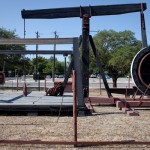How a Mild Winter (Among Other Things) Decreased CO2 Emissions
Last winter’s poor performance, along with other factors, has created an unexpected positive. The June monthly Energy Review by the U.S. Energy Information Administration says that carbon dioxide emissions from energy use for the first quarter of 2012 were the lowest they’ve been in two decades.
High demand for heat from fossil fuels usually pushes carbon dioxide emissions to their highest during the first quarter of the year. But as discussed in a Today in Energy article, several factors prevented this from occurring:
- A mild winter that reduced household heating demand and therefore energy use
- A decline in coal-fired electricity generation, due largely to historically low natural gas prices
- Reduced gasoline demand
During the first quarter, U.S. CO2 emissions totaled 1,340 million metric tons – a figure down 8 percent from 2011. Between natural gas, coal and petroleum, coal represented the largest decrease in carbon dioxide emissions. Coal emissions were down by 18 percent (387 million tons) as utilities increasingly chose to use cheaper natural gas resources over coal.
Sheyda Aboii is an intern with StateImpact Texas.


